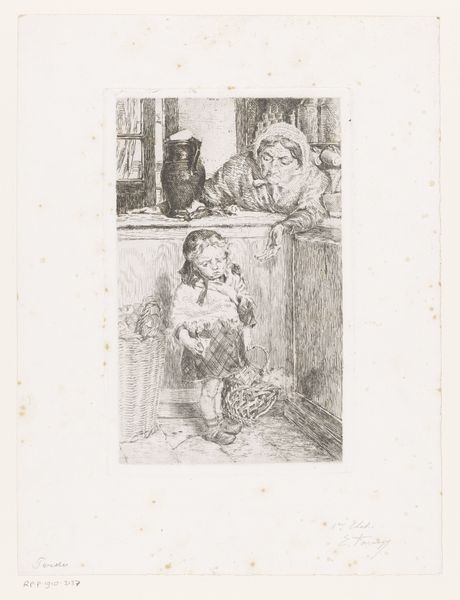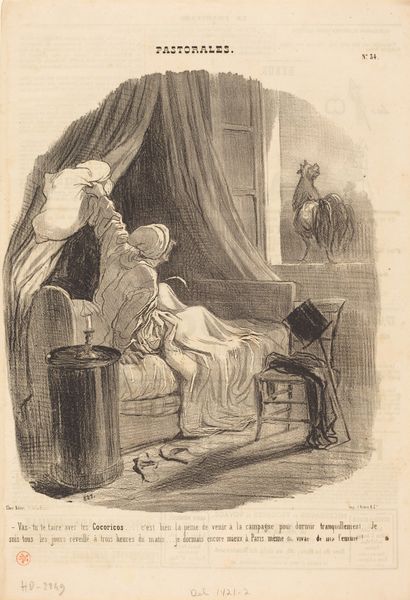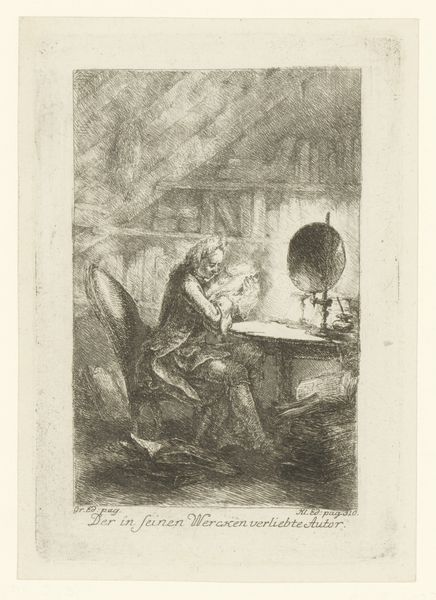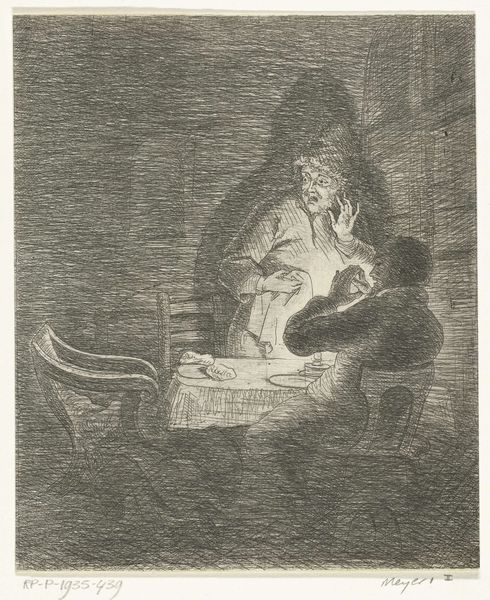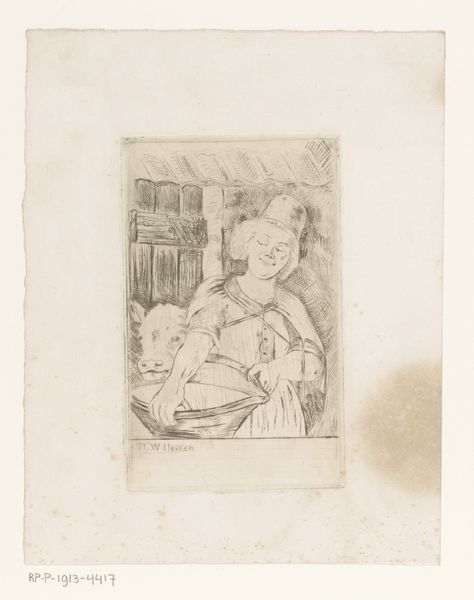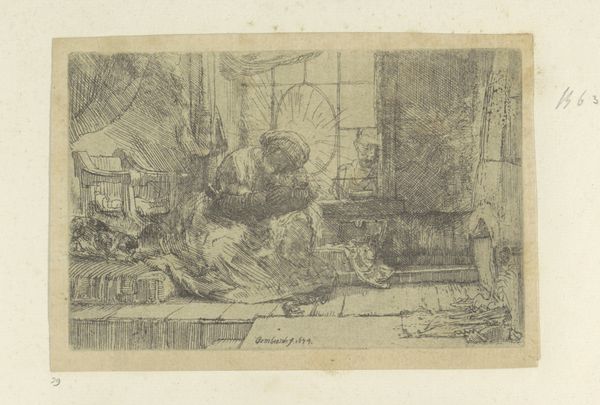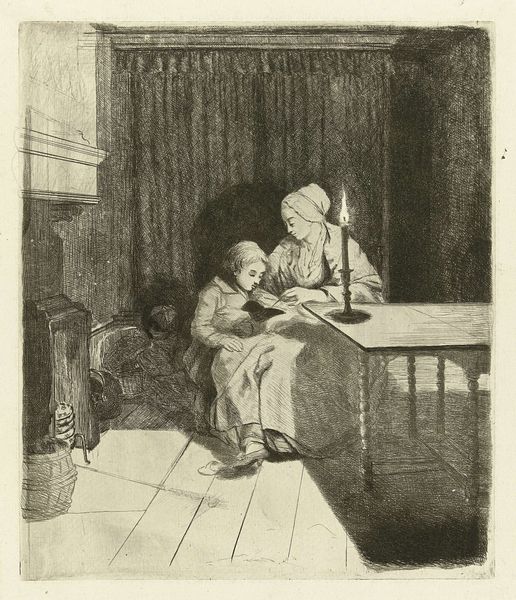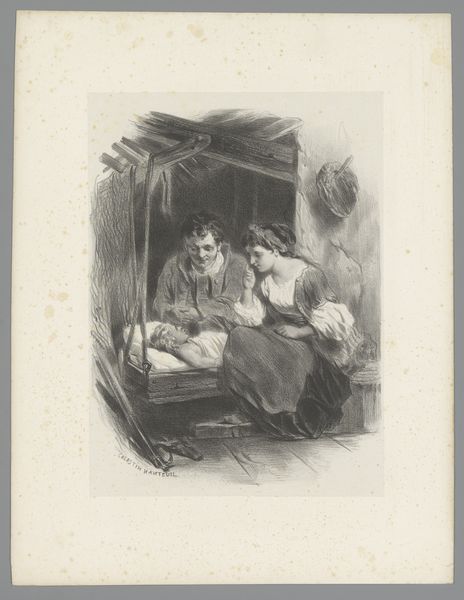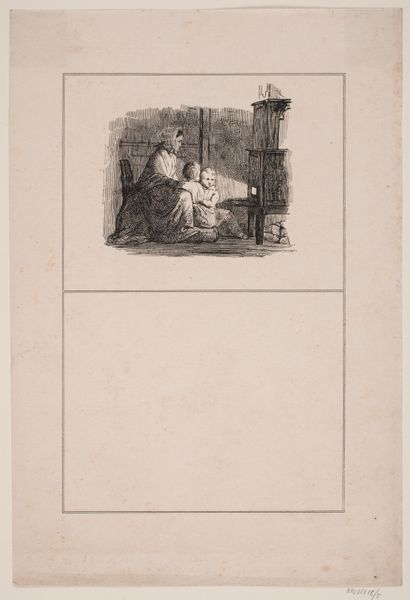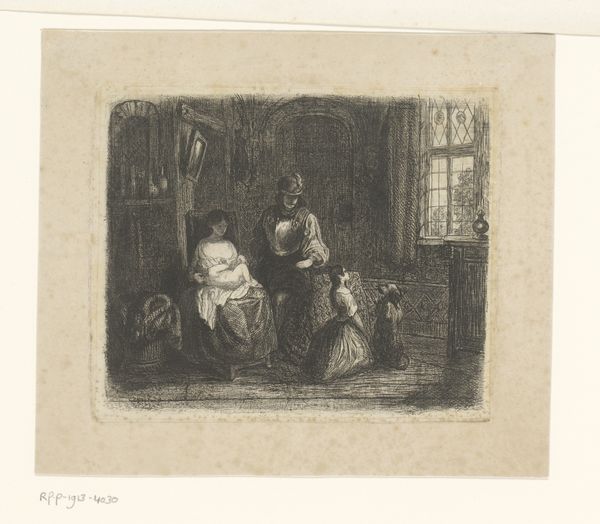
drawing, pencil
#
portrait
#
pencil drawn
#
drawing
#
mother
#
pencil sketch
#
charcoal drawing
#
pencil
#
pencil work
#
genre-painting
#
realism
Dimensions: height 270 mm, width 230 mm
Copyright: Rijks Museum: Open Domain
Editor: This drawing by Louis Bernard Coclers, "Moeder geeft haar zoon les," made sometime between 1756 and 1817, really captures a quiet, domestic scene using just pencil. I'm struck by how ordinary and relatable it feels, like a snapshot of daily life. What do you see in it? Curator: What immediately jumps out at me is how this drawing intersects with ideas about education and the family within the late 18th century social context. Note how Coclers presents the mother as the instructor, a role often marginalized historically. This reflects a shift in thinking, particularly among the bourgeoisie, emphasizing domesticity and the moral instruction of children, often spearheaded by women within the household. Do you think this challenges existing social hierarchies? Editor: I hadn’t thought about it like that! It is interesting to see the mother as the teacher. So, instead of just being a domestic scene, it could be subtly promoting female intellectual capability? Curator: Precisely! The distribution of imagery also played a vital role. Drawings like this could have circulated within a specific social stratum. The presence of realism, shying away from idealization, further grounds it in a particular sociopolitical sphere that values everyday life and relatable figures. Also consider where art like this might be displayed and who would be able to access the original. Editor: That’s fascinating! Thinking about how and where art circulates really changes how I see it. I appreciate learning about art through the lens of social history. Curator: And I appreciate your insights! It reminds us to always consider the many layers that contribute to the artwork's narrative. Art acts as a mirror reflecting society's changing values and norms.
Comments
No comments
Be the first to comment and join the conversation on the ultimate creative platform.

